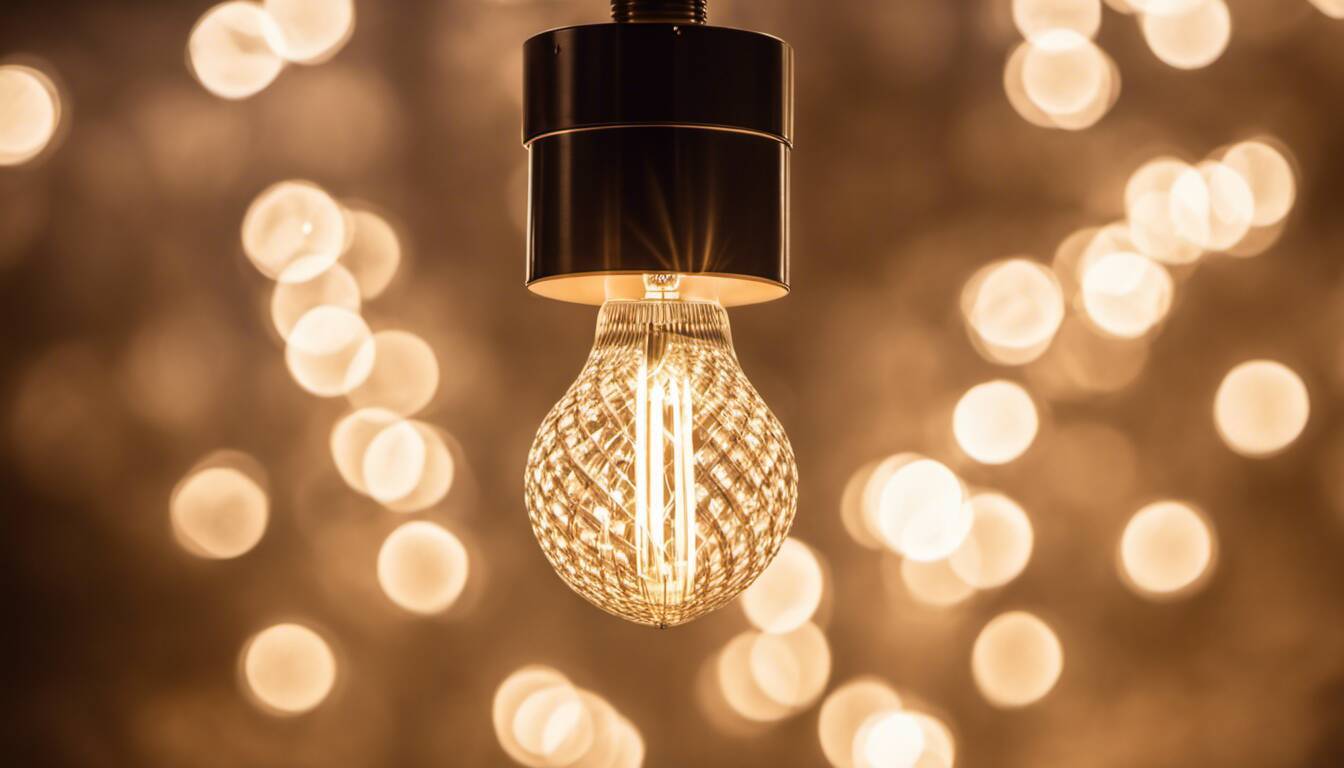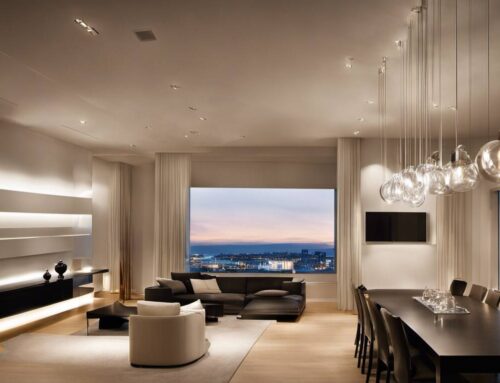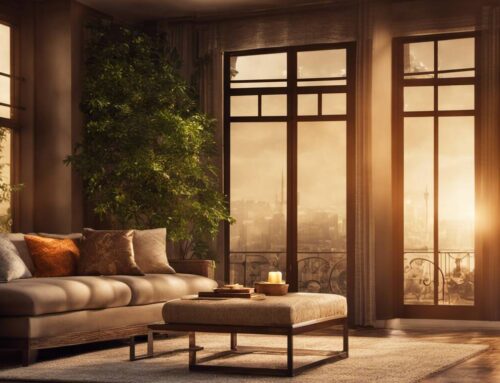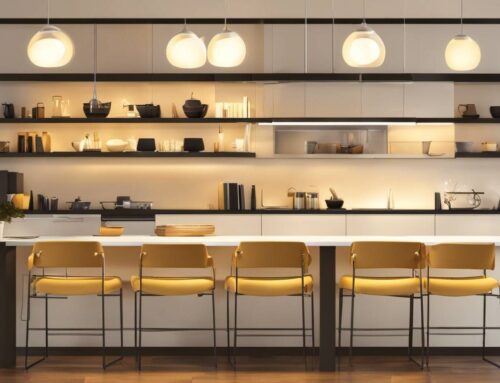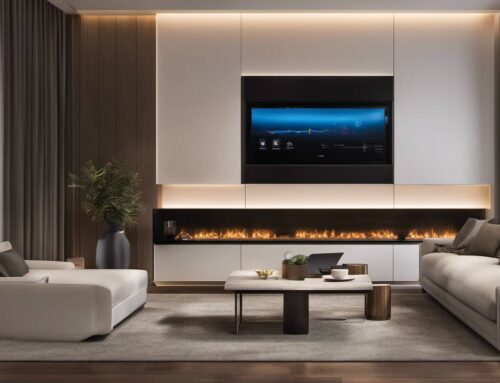In the world where energy efficiency, cost-effectiveness and durability are king, LED lighting has emerged as a true game changer. But how much do you really know about these tiny luminaires that have taken over our homes, businesses, and cities? From their inventive design to their impact on the environment and your wallet, we’re here to illuminate the core basics of LED lights. Get ready for an enlightening journey into the bright and vibrant realm of LED lighting. No science degree required or electrician experience needed, just your curiosity will suffice!
LED or Light Emitting Diode is a semiconductor device that emits light when an electric current pass through it. LEDs consume less energy than incandescent bulbs, last longer, and are more environmentally friendly due to their lower carbon footprint. They do not contain hazardous substances such as mercury and do not emit ultraviolet radiation. Another benefit of LEDs is that they are directional which means they emit light in a specific direction making them suitable for various applications such as task lighting, floodlights, and accent lighting. Overall, LED technology offers significant advantages over traditional lighting solutions, making it a popular choice for both residential and commercial applications.
Understanding LED Lights
LED lights, or Light Emitting Diodes, are revolutionizing the lighting industry with their energy-efficient and long-lasting properties. Before we delve into their structure and functionality, it’s essential to understand the basics of what LEDs are and how they work.
At their core, LEDs are semiconductors that convert electrical energy directly into light. Unlike traditional incandescent bulbs that rely on heating a filament to produce light, LEDs pass an electric current through a microchip. This current stimulates electrons, causing them to release energy in the form of photons, which creates light.
What makes LEDs even more remarkable is their ability to produce light with remarkable efficiency. In fact, LEDs can produce light up to 90% more efficiently than incandescent bulbs. This means they waste very little energy as heat, making them significantly more energy-efficient.
It’s important to note that the lifespan of LED lighting products is defined by “lumen depreciation” rather than burnout. Lumen depreciation refers to the gradual decrease in brightness over time. While traditional bulbs tend to burn out suddenly, LEDs slowly dim over thousands of hours of use.
Now that we have a basic understanding of how LED lights work, let’s explore their structure and functionality in more detail.
- According to a 2020 Energy Department report, LEDs make up 38% of installed stock in the general illumination market.
- LEDs can produce light that is up to 90% more efficient than traditional incandescent bulbs, according to numerous studies.
- Over 70% of A19 (the most common type of bulb in households) sales in the United States were LEDs in 2019, according to ENERGY STAR.
- LED lights are semiconductors that convert electrical energy directly into light, making them significantly more energy-efficient than traditional incandescent bulbs. Their lifespan is defined by lumen depreciation rather than burnout, and they slowly dim over thousands of hours of use. LED lights are revolutionizing the lighting industry with their efficiency and long-lasting properties.
Structure and Functionality
The structure and functionality of an LED consist of several key components working together harmoniously to produce light efficiently. Let’s break down these elements:
- Microchip: At the heart of an LED is a tiny microchip made from semiconductor materials like gallium arsenide or gallium phosphide. This microchip controls the flow and intensity of electricity within the LED.
- Electrical Contacts: There are two electrical contacts within an LED – one positive (anode) and one negative (cathode). These contacts allow the flow of electric current through the microchip, activating the LED.
- Substrate: The substrate is the base of the LED, providing support for the microchip and electrical contacts. It is typically made of materials such as ceramic or metal.
- Encapsulation: To protect the delicate components of an LED, it is encapsulated in a resinous material or epoxy. This also helps to enhance its durability and resistance to environmental factors like moisture and temperature.
- Heat Sink: LEDs generate heat during operation, which can affect their performance and lifespan if not managed properly. Heat sinks are used to absorb and dissipate this heat efficiently, preventing overheating and ensuring the LED’s longevity.
- Phosphor Coating: In some cases, LEDs emit light in a specific color, such as blue or ultraviolet. To produce white light, these LEDs are combined with a phosphor coating that absorbs some of the emitted light and re-emits it as a different color, creating a blend that appears white to our eyes.
Imagine an LED bulb in your home emitting warm white light. Inside that bulb, there is a microchip controlling the flow of electricity, two electrical contacts facilitating current flow, and a substrate providing structural support. It is encapsulated to protect its internal components and has a heat sink to prevent overheating. Additionally, it might have a phosphor coating to produce a warm white glow.
Now that we have explored the structure and functionality of LED lights, we can delve further into other important aspects such as lumen depreciation versus burnout, which will help us understand their longevity and performance better.
Lumen Depreciation vs Burnout
When it comes to LED lighting, understanding the concept of lumen depreciation versus burnout is crucial. Unlike traditional incandescent bulbs that simply burn out, LEDs have a different way of indicating the end of their useful life.
Imagine you have a regular incandescent bulb that emits a certain level of brightness when first installed. Over time, as it gets older, there is a gradual decrease in its light output until eventually, it burns out completely. This phenomenon is known as burnout.
In contrast, LEDs undergo a process called lumen depreciation. Essentially, this means that over time, the brightness or light output gradually decreases compared to when the LED was brand new. Instead of suddenly burning out like incandescent bulbs, LEDs continue to emit light but at lower levels as they age. This gives them a longer lifespan and makes them more efficient in terms of energy consumption.
The reason behind this lumen depreciation is closely tied to the technology used in LEDs. These tiny light sources work by passing an electrical current through a microchip, illuminating the diodes that produce light. However, as they are used over time, the efficiency can decline due to factors like heat and other environmental conditions.
To tackle these issues and prolong the lifespan of LEDs, heat sinks are often used. Heat sinks absorb and dissipate excess heat generated by the electrical current passing through the microchip. By managing heat effectively, LEDs can maintain optimal performance and increase their longevity.
So remember, when it comes to LED lighting, lumen depreciation is the gradual decrease in brightness over time, while burnout commonly associated with incandescent bulbs does not occur with LEDs.
Benefits of Switching to LED
LED lighting offers a myriad of benefits compared to traditional lighting options such as incandescent or CFL bulbs. Let’s explore some of these advantages:
Energy Efficiency
When it comes to energy efficiency, LEDs have a clear advantage. They utilize technology that allows them to produce light up to 90% more efficiently than incandescent bulbs. This means that a smaller amount of energy is wasted as heat, making LEDs an environmentally friendly lighting choice.
Furthermore, LEDs emit light in a specific direction, unlike traditional bulbs that scatter light in all directions. This directional nature increases their efficiency as there is no need for additional reflectors or diffusers to redirect the light where you need it most. As a result, you get more usable light and less wasted energy.
Longevity and Durability
One of the standout features of LED lighting is its longevity. While the lifespan of incandescent bulbs typically ranges from 1,000 to 2,000 hours and CFL bulbs last around 8,000 hours, LEDs can last anywhere from 25,000 to 50,000 hours or even longer. This prolonged lifespan can greatly reduce the frequency of replacement, saving you money over time.
Additionally, LEDs are highly durable due to their solid-state construction. They are resistant to shock, vibration, and external impact that could otherwise damage traditional filament-based bulbs. This durability makes them ideal for various applications both indoors and outdoors.
Environmental Friendliness
LEDs not only consume less energy but also contain fewer harmful materials compared to other types of lighting. Unlike CFL bulbs which contain small amounts of mercury that can be hazardous if improperly disposed of, LEDs do not pose such risks. Additionally, LED lights are fully recyclable once they reach the end of their long lifespan.
Versatility and Design Flexibility
LEDs offer significant design flexibility due to their compact size and ability to emit light in various colors. Different color LEDs can be combined or covered with phosphor material to produce white light with varying color temperatures. This versatility allows for creative lighting designs in both residential and commercial spaces, making LED lighting a popular choice among designers and homeowners alike.
Energy Efficiency and Directional Light Output
LED lighting has revolutionized the world of illumination with its exceptional energy efficiency and directional light output. Unlike traditional incandescent bulbs, LEDs (light emitting diodes) can produce light up to 90% more efficiently. The secret lies in the way LEDs work—by passing an electrical current through a microchip, they illuminate tiny light sources known as diodes.
A key advantage of LED lighting is its impressive energy efficiency. LEDs convert almost all the electricity they consume into light, minimizing wastage. This efficiency translates into significant cost savings and reduced environmental impact. Compared to incandescent or CFL (compact fluorescent lamp) bulbs, LEDs use considerably less electricity for the same level of brightness.
But it isn’t just about energy efficiency; LEDs also excel when it comes to directional light output. Unlike their counterparts, LEDs emit light in a specific direction, making them inherently more efficient in their application. This targeted lighting ensures that no light is wasted in illuminating areas where it is not required.
Furthermore, LED lighting showcases excellent longevity due to its design feature known as “lumen depreciation.” Instead of suddenly burning out like incandescent bulbs, LEDs gradually decrease their light output over time. This means that even after years of use, LED bulbs will still provide significant illumination compared to other types of lighting technologies.
To maintain their longevity and performance, LEDs incorporate heat sinks to absorb and dissipate excess heat. Heat can significantly impact performance and shorten the lifespan of LED lights. The heat sinks ensure that the temperature stays within optimal limits, preventing overheating and prolonging the life span of these efficient lighting solutions.
LED Lighting Applications
LED lighting finds its application across a wide range of scenarios, making it one of the most versatile lighting solutions available. Let’s explore some popular uses for LED lights and the benefits they bring to each application.
Under Cabinet Lighting
Under cabinet lighting is a common application where LEDs shine—literally! Whether it’s in the kitchen or workspace, LED strips or fixtures can be installed under cabinets to provide focused lighting on countertops or workstations. This task lighting not only enhances visibility but also adds an aesthetic touch to the space. LED under cabinet lights are energy-efficient and produce minimal heat, making them perfect for longer operational periods.
Recessed Lighting
Recessed lighting provides a sleek and modern illumination option for both residential and commercial spaces. LED recessed lights offer several advantages over traditional options. Their compact size allows for easy installation into ceilings or walls, providing a seamless and unobtrusive look. Additionally, their efficiency ensures long-term cost savings, while directional light output directs the focus exactly where it’s needed. Whether used for ambient lighting or highlighting specific areas, LED recessed lights offer flexibility and style.
These are just a couple of examples illustrating the versatility of LED lighting applications. From decorative purposes such as holiday lighting to outdoor security illumination, LEDs continue to amaze with their adaptability and efficiency.
Cabinet and Recessed Lighting
When it comes to creating the perfect ambiance in your home or workspace, cabinet and recessed lighting can play a vital role. These types of lighting fixtures offer versatile options for illuminating specific areas and enhancing the overall aesthetics of a room. Let’s take a closer look at what makes cabinet and recessed lighting so appealing.
Cabinet lighting is typically installed inside cabinets or display cases to highlight objects or create a warm glow in the surrounding area. It can be used in kitchens to showcase decorative dishes or provide task lighting for food preparation areas. In living rooms, cabinet lighting can be utilized to accentuate artwork or display cherished collectibles. The key is to strategically place the fixtures to enhance the visual appeal and bring focus to specific elements within the room.
On the other hand, recessed lighting, also known as can lights or downlights, is installed into the ceiling, creating a seamless and unobtrusive lighting option. These fixtures are ideal for providing ambient lighting throughout a room without drawing attention to themselves. Recessed lighting can add depth and dimension to any space while also offering flexibility since they can be dimmed or directed towards specific areas as needed.
For instance, imagine having a built-in bookshelf in your home office. By installing cabinet lighting along the shelves, you can showcase your collection of books or prized possessions while simultaneously adding an elegant touch to the room’s decor. Moreover, by incorporating recessed lighting in the ceiling above your workspace, you can ensure ample illumination for productivity without cluttering your desk with additional lamps.
Whether you’re aiming for functionality or aesthetic appeal, cabinet and recessed lighting provide customizable options that blend seamlessly with your existing decor. The versatility of these fixtures allows you to experiment with different light intensities, angles, and color temperatures to achieve your desired atmosphere.
As we explore different aspects of LED lighting, it’s essential to consider energy efficiency and environmental impact. That’s where ENERGY STAR standards come into play.
Complying with ENERGY STAR Standards
In today’s world, energy efficiency is a paramount concern, both for cost-saving purposes and reducing our carbon footprint. When it comes to LED lighting, complying with ENERGY STAR standards ensures that you are making an eco-friendly choice while also enjoying the benefits of superior performance.
ENERGY STAR is a U.S. Environmental Protection Agency (EPA) program that promotes energy-efficient products and practices. For LED lighting products to earn the ENERGY STAR label, they must meet specific requirements related to energy consumption, brightness, color quality, lifespan, and warranty. These stringent criteria ensure that consumers can trust the reliability and energy efficiency of certified LED products.
Under the ENERGY STAR program, different product categories have their respective specifications. For LED lamps (light bulbs), the most recent specification version is 2.1, which replaced version 2.0 from December 2015. This update introduced new requirements and test methods to promote better performance and uniformity across all certified products.
Let’s say you’re in the market for an LED light bulb to replace your old incandescent one. By choosing an ENERGY STAR-certified LED bulb, you can be confident that it not only provides sufficient brightness but also consumes significantly less energy compared to traditional incandescent bulbs. This not only saves you money on your electricity bills but also helps reduce greenhouse gas emissions associated with power generation.
Moreover, by opting for ENERGY STAR-certified LED lighting fixtures such as recessed lights or cabinet lights, you contribute towards a more sustainable future by reducing energy consumption and minimizing waste through longer lifespans.
Now that we’ve covered the importance of complying with ENERGY STAR standards in LED lighting, let’s explore another crucial aspect: long-term testing and color quality.
Long-Term Testing and Color Quality
When it comes to LED lighting, long-term testing is a crucial aspect to consider. Unlike traditional incandescent bulbs that burn out after a certain number of hours, LEDs have a different way of defining the useful life of their products. Rather than focusing on burnout, LED lighting products are defined by lumen depreciation. This means that over time, the brightness of an LED may gradually decrease.
Long-term testing is conducted to ensure that LED lighting products maintain their performance and quality over an extended period. Energy Star certified LED lighting products, for instance, undergo rigorous testing to meet specific requirements for color quality, light output, distribution, equivalency claims, and more. These tests are essential in guaranteeing the reliability and longevity of LEDs.
When it comes to color quality in LED lighting, it’s important to note that different LEDs can emit light with different color temperatures. Some LEDs produce cool white light similar to daylight, while others emit warm white light resembling the glow of traditional incandescent bulbs. Furthermore, LEDs can also be combined or covered with phosphor material to produce white light. This versatility allows users to create the desired ambiance or lighting effect in various settings.
To evaluate the color quality of LEDs, industry standards define metrics such as the Color Rendering Index (CRI) and Correlated Color Temperature (CCT). CRI measures how accurately colors are rendered when illuminated by a light source compared to a reference source, while CCT defines the perceived “warmth” or “coolness” of the light emitted by an LED.
During long-term testing and evaluation of LED lighting products, these color quality metrics play a significant role. They ensure that LEDs provide accurate and pleasing representations of colors without any distortions or inconsistencies over time. This is particularly important in applications where color accuracy is crucial, such as in museums or retail displays.
In conclusion, long-term testing is paramount in assessing the reliability and performance of LED lighting products. It ensures that LEDs maintain their brightness and color quality over an extended period, providing users with consistent and efficient illumination. By understanding the significance of long-term testing and color quality, consumers can make informed decisions when selecting LED lighting solutions for their specific needs.
What are the main advantages of using LED lighting?
The main advantages of using LED lighting are energy efficiency, longer lifespan, durability, and versatility. LED lights consume significantly less energy compared to traditional lighting options, resulting in lower electricity bills and reduced carbon footprint. They have a longer lifespan, often lasting for over 50,000 hours, reducing the need for frequent replacements. LEDs are also durable and resistant to shock, vibrations, and extreme temperatures. Additionally, they offer versatility in terms of color options and dimming capabilities. According to the U.S. Department of Energy, residential LED bulbs use at least 75% less energy and can last up to 25 times longer than incandescent lighting.
What are some common applications for LED lighting?
LED lighting is widely used in various applications due to its energy efficiency and long lifespan. Some common applications include residential lighting, commercial lighting, automotive lighting, and signage. In residential settings, LEDs are popular for indoor and outdoor lighting due to their ability to produce bright and focused light while consuming less energy compared to traditional bulbs. In commercial spaces, LEDs are commonly used for office lighting, parking lot lights, and display lighting due to their low maintenance and cost-effectiveness. Additionally, LEDs are increasingly used in automotive applications for headlights, taillights, and interior lighting as they offer improved visibility and better energy efficiency. According to a study by the U.S. Department of Energy, LED lighting can reduce energy consumption by up to 75% compared to traditional incandescent bulbs.
Are there any potential drawbacks or limitations to using LED lighting?
Yes, there are potential drawbacks and limitations to using LED lighting. One drawback is the initial cost, as LED bulbs can be more expensive compared to traditional incandescent bulbs. However, it is important to note that LED bulbs have a longer lifespan and lower energy consumption, which can result in cost savings in the long run. Additionally, some users may find that certain LED lights produce a cooler or bluish light, which may not be preferred for certain settings. However, advancements in LED technology have led to the development of warmer color temperatures that mimic the cozy glow of incandescent bulbs. Overall, while there may be some limitations, LED lighting offers numerous benefits such as energy efficiency and durability that outweigh these drawbacks. According to the U.S. Department of Energy, switching all lighting in the United States to LEDs by 2027 could save approximately 348 TWh of electricity and reduce greenhouse gas emissions by around 254 million metric tons annually.
How do you properly install and maintain LED lights?
Properly installing and maintaining LED lights is essential for their longevity and optimal performance. Begin by ensuring a stable power source to prevent flickering or damage. Use compatible dimmers and drivers specific to LED technology to avoid compatibility issues. Regularly clean the fixtures and remove any dust or debris that may accumulate, as this can affect the light output. Finally, adhere to the manufacturer’s instructions for voltage requirements and usage guidelines. According to a study by the U.S. Department of Energy, LEDs have a longer lifespan and lower maintenance costs compared to traditional lighting options, making them a cost-effective choice in the long run.
How is LED lighting different from other types of lighting?
LED lighting is different from other types of lighting in several ways. Firstly, they are more energy-efficient, consuming significantly less electricity compared to incandescent or fluorescent bulbs. LEDs also have a longer lifespan, lasting up to 25 times longer than traditional bulbs. Furthermore, LED lights are more durable and resistant to shocks, making them an ideal choice for outdoor or industrial lighting. Lastly, LEDs emit light in a specific direction, resulting in better lighting efficiency and reduced light pollution. According to the U.S. Department of Energy, widespread use of LED lighting by 2027 could save approximately 348 TWh of electricity, equivalent to the annual output of 44 large power plants.
